Our Rich Culture & Heritage Chapter Notes | Social Science Olympiad Class 4 PDF Download
| Table of contents |

|
| Introduction |

|
| Architecture of India |

|
| Knowing India |

|
| Conclusion |

|
Introduction
- India has a rich history and culture that makes it special.
- It has its own style of art, buildings, ideas, music, and dances.
- Some famous places in India are the Taj Mahal, the Ganges River, the Thar Desert, and the Himalayan Mountains.
- India has a variety of plants and animals like snakes, peacocks, tigers, and lions.
- Indian heritage includes its past and all the traditions and customs passed down through generations.
- These things make Indian heritage colourful and interesting.
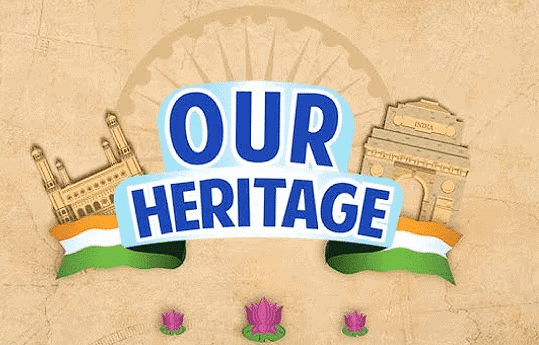
Architecture of India
- India has many beautiful old buildings that show its rich culture.
- There are many special temples and monuments.
- Some examples are:
1. Ajanta and Ellora caves
2. Khajuraho temples
3. Konark temple
4. Stupas of Sanchi and Sarnath
5. Shore temple
6. Taj Mahal - These places show how talented Indian builders and artists were in the past.
Knowing India
LanguagesIn India, people speak many different languages. There are 22 languages officially recognized by the government. 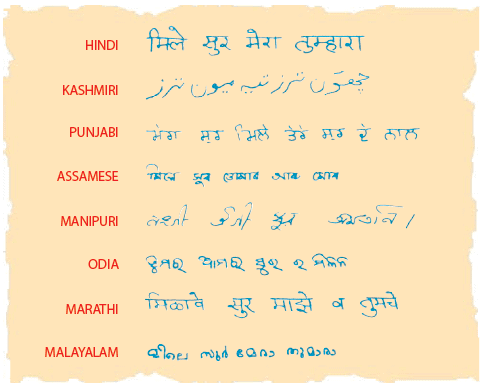 Each language has a set of letters in which it is written. This set of letters is called script.
Each language has a set of letters in which it is written. This set of letters is called script.
- Hindi and English are the main ones used for official purposes.
- Some languages, like Kashmiri and Urdu, are written from right to left instead of left to right.
Dresses
People in India wear a variety of clothes.
- For women, common outfits include sarees, which are long pieces of cloth wrapped around, and salwar-kameez, which are loose-fitting pants with a matching top. They also wear skirts.
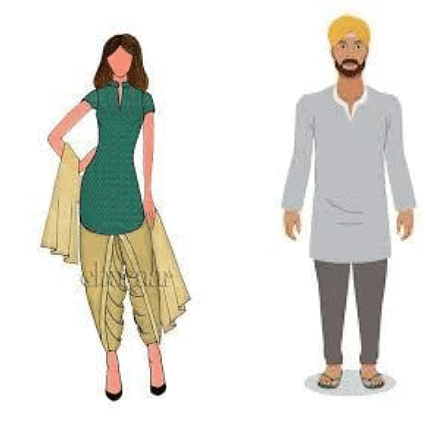
- Men usually wear jeans and shirts, but sometimes they wear kurta-pyjama sets or turbans, especially on special occasions.
Dances
In India, there are two main types of dances: folk and classical.
- Folk dances are performed during happy occasions like weddings and festivals, where people come together to celebrate.
- Classical dances have a long history and were first performed in temples as a form of worship.
- Some famous classical dancers are Pandit Birju Maharaj and Sharmila Biswas.
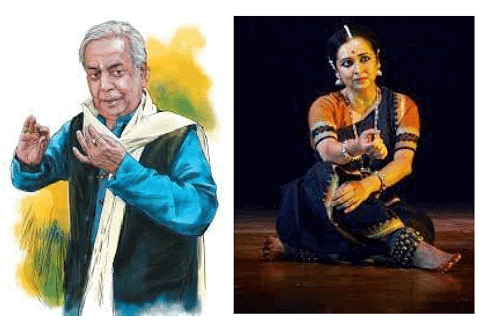 Pandit Birju Maharaj(left) and Sharmila Biswas(right)
Pandit Birju Maharaj(left) and Sharmila Biswas(right)
Music
Indian music comes in two flavors: folk and classical.
- Folk music is like the songs passed down through generations, reflecting the local culture and traditions. Examples include Bihugeet and Baul sangeet.
- Classical music, on the other hand, has more structured styles called Hindustani and Carnatic.
- Hindustani music is from the north, while Carnatic music comes from the south. Famous singers include Anand Bhate and Ranjani-Gayatri.
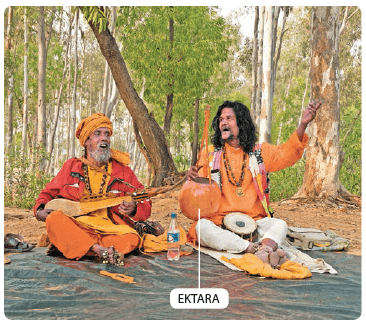 Ektara is a commonly used musical instrument in Baul sangeet.
Ektara is a commonly used musical instrument in Baul sangeet.
Monuments
India is home to many old and new monuments, each with its own story to tell.
- Ancient monuments, like the stupa at Sanchi and the Taj Mahal, give us a glimpse into the past and showcase incredible craftsmanship.

- Modern monuments, such as the Akshardham Temple, continue to amaze visitors with their architectural beauty and spiritual significance.
[Question: 1707558]
EduRev Tips:
- Hindi / Telugu is the official language of India.
- Women / Men wear turbans.
- Dances performed on festivals are called classical / folk dances.
- Classical music is of two / three types.
- The stupa at Sanchi was built by Emperor Ashoka / Akbar.
Paintings
Indians have been creating art for centuries.
- Early paintings, found in caves, depict scenes from ancient life.
- During the Mughal era, artists were inspired to paint intricate scenes from everyday life.
- Today, modern painters like Paresh Maity and Anjolie Ela Menon carry on this rich tradition, adding their own unique styles to the canvas.
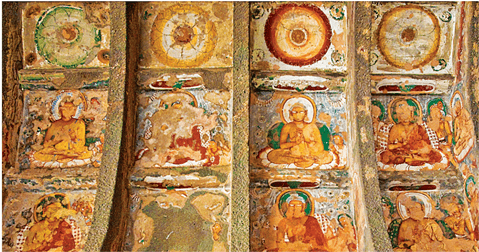 Cave paintings at Ajanta
Cave paintings at Ajanta
Handicrafts
Handicrafts are special items made by hand, each telling a story of craftsmanship and tradition.
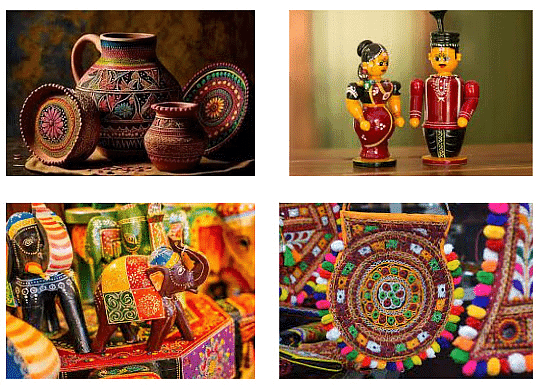 Different types of handicrafts
Different types of handicrafts
- Examples include terracotta horses, crafted with clay in West Bengal, and Kanchipuram sarees, woven with skill in Tamil Nadu.
- These handicrafts not only showcase the talent of the artisans but also preserve India's cultural heritage.
Festivals
Festivals are a big part of life in India, bringing people together in celebration and joy.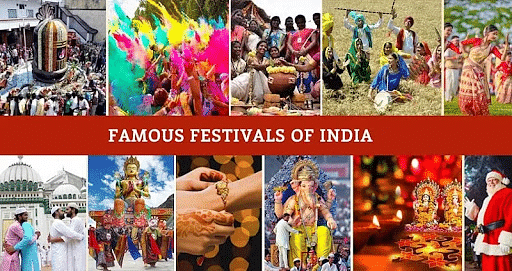
There are four main types of festivals: national, religious, harvest, and special.
- National festivals like Independence Day and Republic Day unite the country in patriotic fervor.
- Religious festivals, such as Diwali and Christmas, celebrate different faiths and traditions. Harvest festivals like Baisakhi and Onam mark the seasons and the bounty of nature.
- Special festivals, like the Taj Mahotsav and the Desert Festival, showcase the rich cultural diversity of India and attract tourists from all over the world.
- Harvest festivals in India are joyous celebrations that mark the end of the agricultural season and the bountiful harvest of crops. These festivals are deeply rooted in Indian culture and traditions, reflecting the agrarian way of life and the importance of farming in the country. Examples include Pongal, Bihu, Onam, Baisakhi.
Edurev Tips:
- The Constitution of India recognizes 22 languages.
- Women and men wear different dresses. Men also wear turbans.
- Folk and classical dances are popular in India.
- Hindustani and Carnatic are the two styles of classical music in India.
- The beautiful monuments of India attract many tourists.
- India has a rich tradition of painting and handicrafts.
- Many national, religious, harvest and special festivals are celebrated in India.
Key Facts and Summary
- India is a large and diverse country located in Asia, surrounded by natural boundaries like the Himalayas and major water bodies.
- India shares its land borders with countries like Pakistan, China, Nepal, and others, and has sea neighbors like Sri Lanka and Maldives.
- Politically, India is divided into 28 states and 8 Union Territories, with each state having its own capital.
- Physical divisions of India include the Northern Mountains, Plains, Western Desert, Southern Plateaus, and Islands, each contributing to the rich geography of the country.
Conclusion
India is a country that is not only vast in size but also rich in diversity. From its towering mountains to its expansive deserts, fertile plains, and beautiful islands, India’s geography plays a crucial role in its history, culture, and development. Understanding these aspects of India helps us appreciate the country even more.
|
26 docs|22 tests
|
FAQs on Our Rich Culture & Heritage Chapter Notes - Social Science Olympiad Class 4
| 1. What are the key features of Indian architecture? |  |
| 2. How does Indian architecture reflect the country’s history? |  |
| 3. What are some famous architectural sites in India? |  |
| 4. How does the architecture of India vary by region? |  |
| 5. What role does architecture play in understanding Indian culture? |  |




















